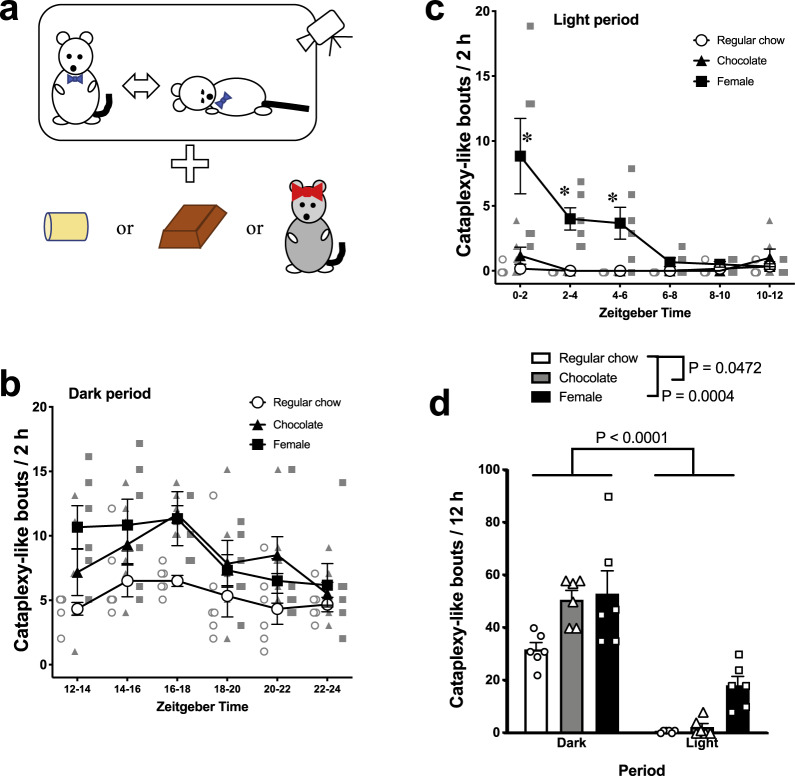Fig. 1. Time-dependent occurrence of cataplexy-like behavior and the effect of chocolate and female encounter.
a Schematic explanation of the experiment. Behavior of orexin neuron-ablated male mouse was video observed with regular chow, chocolate, or female for 12 h. b The number of cataplexy-like bouts during the dark period (ZT12–ZT24) in three treatment groups. Two-way ANOVA (treatment: regular chow, chocolate, female × period: bin length of 2 h) revealed that there was a significant difference in the number of cataplexy-like bouts during the dark period among treatments (F2,15 = 4.094, P = 0.0381) and between time points (F5,75 = 5.723, P = 0.0002). The interaction was not significant (F10,75 = 1.148, P = 0.3395). c The number of cataplexy-like bouts during the light period (ZT0–ZT12) in three treatment groups. There was a significant difference among treatments (F2,15 = 20.85, P < 0.0001) and between time points (F5,75 = 6.639, P < 0.0001). The interaction was also significant (F10,75 = 5.368, P < 0.0001). d Summary for light/dark period over 12 h. Overall, the number of cataplexy-like bouts was higher during the dark period than during the light period (F1,15 = 99.19, P < 0.0001). Note that both chocolate and female encounter increased the number of cataplexy-like bouts during the dark period compared to regular chow. Only female encounter increased the number of cataplexy-like bouts during the light period. The effect of the female encounter on number of cataplexy-like bouts was short-lived and gradually decreased toward regular chow level over 6 h. Data are expressed as mean ± SEM. n = 6 for each group. *P < 0.05 as compared to regular chow.

